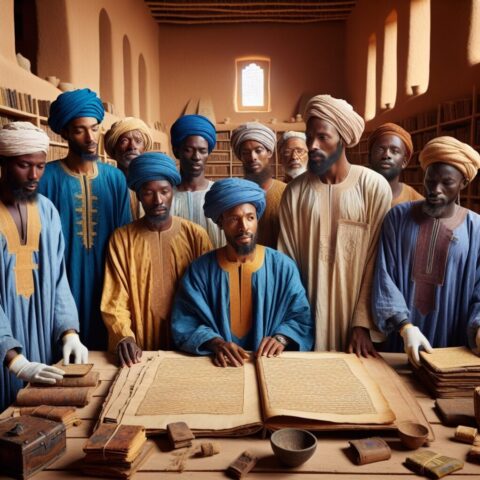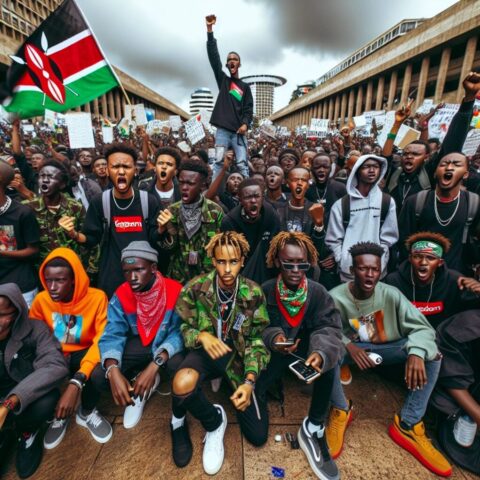New Rhymes Over An Old Beat: A Review of Joseph C. Ewoodzie Jr.’s
Break Beats in the Bronx
Reviewed by Tyler Bunzey| @tbunz3|
with thanks to NewBlackMan (in
Exile)
Tuesday, November 21, 2017.
Hip-hop heads know how the story goes—a
young man named Clive Campbell, also known as DJ Kool Herc, agreed to DJ his
sister’s party at the community center on 1520 Sedgwick Ave. on August 11,
1973, and when he began to play only the break beats of funk records to get
people moving, unto us Hip-Hop was born. After this first party, DJs
Grandmaster Flash and Afrika Bambaataa riffed on Herc’s initial spinning of
break beats, Flash with his Quick Mix Theory and dual turntables and Bambaataa
with his eclectic pastiche of samples. This Hip-Hop Holy Trinity created the
culture that was led by DJs, supported by emcees and b-boys and b-girls, and
promulgated by graffiti artists. Hip-hop culture existed in this pure form,
getting its energy and momentum from city lampposts and disillusioned youth
alike, until it was crucified by the commodification of Sugar Hill Gang’s
“Rapper’s Delight” in 1979, and the unadulterated urban youth culture began the
process of becoming morphing into a industrial, emcee-centered, worldwide,
popular machine.
But Joseph
C. Ewoodzie Jr. disagrees. His first book, Break
Beats in the Bronx: Rediscovering Hip-Hop’s Early Years (University of
North Carolina Press) seeks to reimagine this master narrative of early Hip-Hop
history, a period in time that he sees as largely unexamined by scholarship on
Hip-Hop. Ewoodzie does not seek to destabilize our understanding of the
creation and formation of early Hip-Hop, but rather he looks to provide new and
“fresh” evidence that can give us a clearer picture of how Hip-Hop really
functioned in New York society in the 1970s (11). He (re)mixes interviews from
the Museum of Popular Culture (MoPOP) and from independent Hip-Hop historian
and Harlem native Troy L. Smith with academic sociological theory in order not
only to examine Hip-Hop’s creation and development as an aesthetic culture but
also to explain the role that Hip-Hop played in the communities in which it was
created.
Ewoodzie
artfully balances revision with respect for Hip-Hop’s founders and the status
that they have achieved. He does not seek to show that Herc, Flash, and
Bambaataa are undeserving of the status that they have in Hip-Hop folklore, but
rather Ewoodzie desires to “move from a heroic account toward a people’s
history of Hip-Hop” (5). Ewoodzie, a professor of Sociology at Davidson
College, argues that Hip-Hop is not the product of some mystifying and
obscure Black artistic genius, and instead it arose from “the lives—including
the joys, pains, interests, inclinations, and dispositions—of a cohort of Black
and Latino teens who came of age during the 1970s in the Bronx” (5).
He frames
his work through the sociological theory of boundary making, treating the first
practitioners of Hip-Hop—like Herc and Flash—as vanguards in the development of
new cultural boundaries. He echoes other historical accounts of Hip-Hop and
claims that early Hip-Hop was contextualized by the Bronx’s “poverty and
chaos”—notably the construction of the invasive cross-Bronx expressway, the
buildings set on fire almost daily by landlords trying to collect insurance
money, and the devastating departure of factories during postwar
deindustrialization (31).
Ewoodzie’s
contribution to this received history is his explanation of how DJs
specifically stepped into this sociological context and became lauded figures.
He suggests that graffiti artists, although admired by many youth, were seen as
“destructive” to the community both because of their anonymity and the nature
of their practice (44). DJs, on the other hand, contributed to the community by
keeping youth out of violent gangs while providing a relatively safe space, and
they developed followings that the graffiti artists’ anonymity prevented them
from gaining
Ewoodzie
also addresses the reasons that Hip-Hop developed specifically in the Bronx and
why other DJs, such as DJ Hollywood, did not have the same street following
that Bronx DJs had. Ewoodzie suggests that there were “proto-boundaries” set up
between both the styles and the spaces of the practices of DJing in different
boroughs (73). Questions of access, dress codes, music styles, sexual politics,
and dancing styles all prevented cultural crossover between Bronx and other
DJs. Bronx DJs gave people a sense of symbolic belonging because of their
neighborhood specific followings, whereas other DJs generally catered to an
uptown audience that did not value space and place as identity markers to the
same degree. In other words, Bronx DJs did not necessarily bring a superior
quality of talent to the culture that made them the figureheads of early
Hip-Hop. They were instead perfect for their context, and the community was
ready for figures like them to create safe and productive cultural space. An
illustration of this point comes in Ewoodzie’s reference to Herc’s deification
as the founder of Hip-Hop, in which he suggests “He was perfect for the times,
and the times were perfect for him” (50).
In
conjunction to his framing of the proto-boundaries of early Hip-Hop, Ewoodzie
progresses to the mid-1970s in which Hip-Hop is forming what he calls an
“internal logic” (81). This internal logic is marked by the development of
conventions, both intentionally and unintentionally, alongside influences from
outside the culture. Ewoodzie charts new developments in the culture, and he
interestingly deconstructs the widely accepted notion that Hip-Hop consisted of
only four cultural actions—DJing, MCing, graffiti writing, and breaking. He
introduces selling tapes (103), dressing fly (125), performing routines (125),
and making flyers (134) as all coequal, if not more important, than MCing in
the years of early Hip-Hop. To Ewoodzie, it is important to acknowledge that
the boundaries of early Hip-Hop culture were porous, and economic, cultural,
and aesthetic concerns shaped cultural practices As a result, these early
practices were in constant flux, and the received master narrative of Hip-Hop
history is not adequate to see how the culture truly formed in its early years.
Ewoodzie
concludes his discussion with an account of the solidifying of early cultural
practices of Hip-Hop in the context of Sugar Hill Gang’s 1979 hit “Rapper’s
Delight.” He suggests that Hip-Hop’s cultural identity became Black and
male because of its connection to cultural boundaries in the Bronx. Using
firsthand accounts, Ewoodzie demonstrates that early Hip-Hop practices were
“structured” to get the attention of women, and he claims, “Hip-Hop became a
masculine space because it helped the male participants onstage to perform
their masculinity, especially their heterosexual desires” (142).
Likewise,
early Hip-Hop practices were structured to represent a distinctly Black
cultural identity despite the cross-cultural influences, namely those of Puerto
Ricans in the Bronx. Ewoodzie suggests that despite the presence of prominent
Puerto Rican MCs, DJs, b-boys, and graffiti artists in the culture, “boundaries
did persist between the two groups, and each guarded its sense of racial and
ethnic distinctness” (162).
Ewoodzie
ends his work by describing how the rise of MCs with the production of
“Rapper’s Delight” permanently changed the culture. Pre-“Rapper’s Delight,”
Hip-Hop was an insular culture, governed by those who practiced it. But with
the rise of MC performances, parties began to mirror concerts instead of
spontaneous selections of music curated by a central figure (177). “Rapper’s
Delight” figured Hip-Hop as a concert-based practice, since it eliminated the
DJ altogether and figured the emcee’s work as a performance to watch, not one
to dance to. Control shifted from interior Hip-Hop practitioners to exterior
commodity markets, and Hip-Hop was indeed indelibly transformed, as received
history suggests.
Taken as a
whole, Ewoodzie’s work functions as more than simply a revision of Hip-Hop’s
received history, although that is a major purpose of the work. He challenges
his readership to use his methodology of combining sociological theories of
boundaries and cultural formation with first-hand accounts of cultural
developments and apply it beyond Hip-Hop in order transform perspectives about
cultural boundaries, urban “decay,” and the rise of new cultural entities
(190-91). He rightly sees his work as widely applicable beyond Hip-Hop
scholarship, and the encouragement for replication of his methodology in his
conclusion help to see how his work could be extended beyond his discussion
therein.
His work
merges sociology with history, combining knowledge-creating methods with new
and fresh accounts that challenge accepted historical narratives. Perhaps we
can read Ewoodzie’s work itself as a part of Hip-Hop cultural production. After
all, he patches together theory and new historical accounts, and remixing that
pastiche with received history of Hip-Hop, he creates a work that is funky,
fresh, and resonates in the echoes of the sounds of the Bronx. Can I get a
witness?
***
Tyler Bunzey is a Teaching Fellow
and Doctoral Student in Department of English and Comparative Literature
at the University of North Carolina – Chapel Hill. Follow him on Twitter: @tbunz3
New Rhymes Over An Old Beat: A Review of Joseph C. Ewoodzie Jr.’s Break Beats in the Bronx
No Comments currently posted | Add Comment
Comment on this Article
Your Name
Please provide your name
Your Comment
//set data for hoidden fields
//transfer();
var viewMode = 1 ;
//============================================================================
//HTML Editor Scripts follow
//============================================================================
function exCom(target,CommandID,status,value)
{
document.getElementById(target).focus();
document.execCommand(CommandID,status,value);
}
function transfer()
{
var HTMLcnt = document.getElementById(“ctl00_MainContent_txtComment_msgDiv1”).innerHTML;
var cnt = document.getElementById(“ctl00_MainContent_txtComment_msgDiv1”).innerText;
var HTMLtarget = document.getElementById(“ctl00_MainContent_txtComment_HTMLtxtMsg”)
var target = document.getElementById(“ctl00_MainContent_txtComment_txtMsg”)
HTMLtarget.value = HTMLcnt;
target.value = cnt;
}
function hidePDIECLayers(f,p)
{
//e.style.display = ‘none’
f.style.display = ‘none’
p.style.display = ‘none’
}
function toggle(e)
{
if (e.style.display == “none”)
{
e.style.display = “”;
}
else
{
e.style.display = “none”;
}
}
function ToggleView()
{
var msgDiv = document.getElementById(“ctl00_MainContent_txtComment_msgDiv1″);
if(viewMode == 1)
{
iHTML = msgDiv.innerHTML;
msgDiv.innerText = iHTML;
//alert(viewMode);
// Hide all controls
Buttons.style.display = ‘none’;
//selFont.style.display = ‘none’;
//selSize.style.display = ‘none’;
msgDiv.focus();
viewMode = 2; // Code
}
else
{
iText = msgDiv.innerText;
msgDiv.innerHTML = iText;
// Show all controls
Buttons.style.display = ‘inline’;
//selFont.style.display = ‘inline’;
//selSize.style.display = ‘inline’;
msgDiv.focus();
viewMode = 1; // WYSIWYG
}
}
function selOn(ctrl)
{
ctrl.style.borderColor = ‘#000000’;
ctrl.style.backgroundColor = ‘#ffffcc’;
ctrl.style.cursor = ‘hand’;
}
function selOff(ctrl)
{
ctrl.style.borderColor = ‘#9BC1DF’;
ctrl.style.backgroundColor = ”;
}
function selDown(ctrl)
{
ctrl.style.backgroundColor = ‘#8492B5’;
}
function selUp(ctrl)
{
ctrl.style.backgroundColor = ‘#B5BED6’;
}
Size 1
Size 2
Size 3
Size 4
Size 5
Size 6
Size 7
//give focus to the msgdiv… always otherwise save button will not save content.
var mDiv = document.getElementById(“ctl00_MainContent_txtComment_msgDiv1”);
try
{ mDiv.focus();}
catch(e)
{
//alert(‘Invisible’)
}
//if ( <> ‘none’)
//
Send to a friend |
View/Hide Comments (0) |






Зарегистрируйтесь прямо сейчас и получите 100 фриспинов без депозита, чтобы испытать свою удачу в увлекательных играх и повысить свои шансы на крупный выигрыш. рейтинг казино онлайн vdactjsxpt …